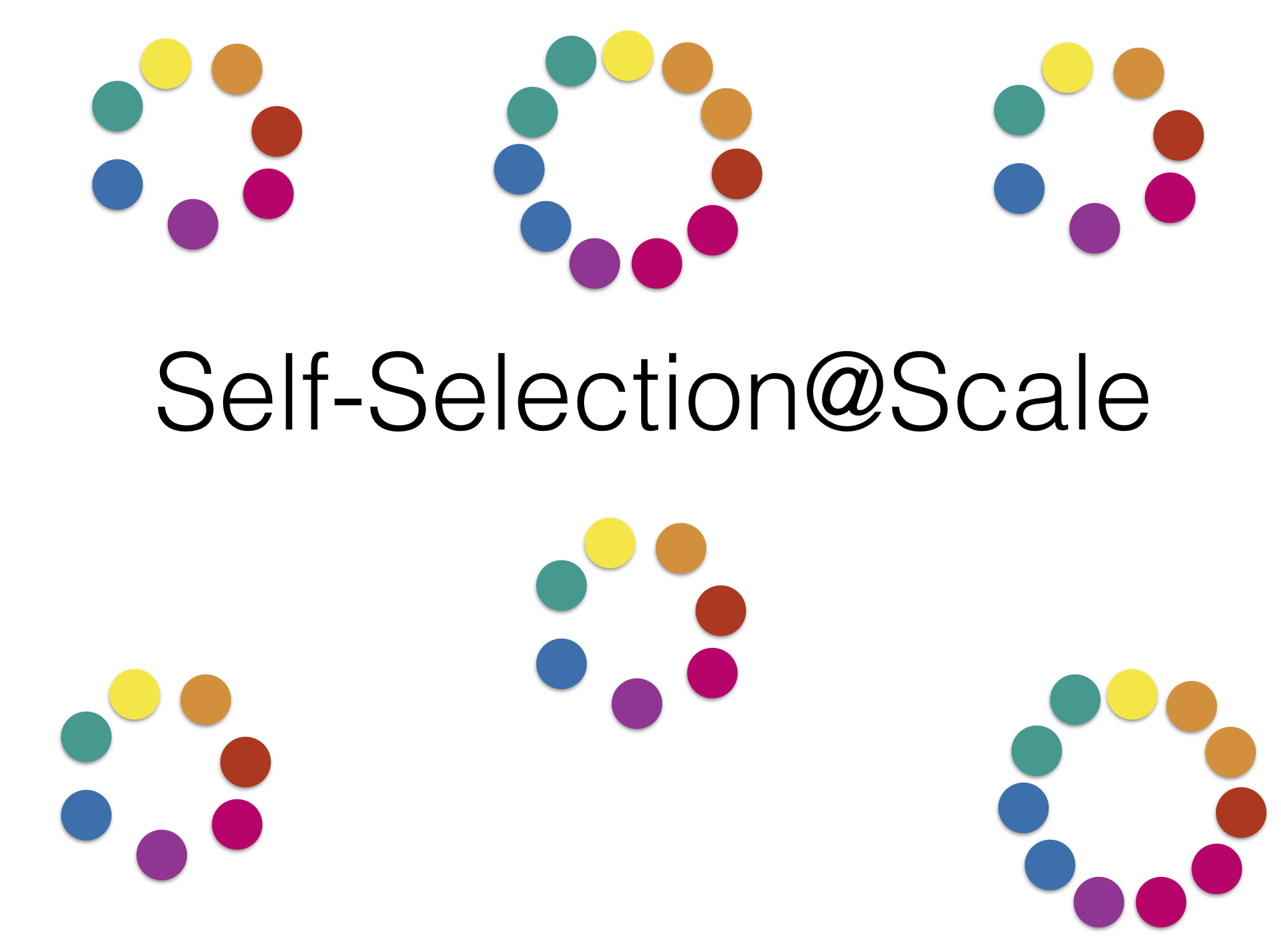Swisscom Directories AG faced the challenge of transforming already agile- with classically organized company parts to a large whole new agile organization. The transformation team went different path, namely a participative agile transformation with several large group events. The journey reached its first peak as the employees formed their own teams through self-selection. In this serie of blog posts we'd like to share the challenges we faced, our experiences and the results of our joint work in the agile transformation team at Swisscom Directories AG.
In this blog post we take a look back to the 2nd Big Room, where the 100 employees formed self-organized teams.
Initial position
This participative approach was continued after the Christmas holidays with the 2nd Big Room and again about 100 participants. This time we were focussing to the organizational change. Each employee should self-organized decide for a guild and then for a saga. But we haven't been ready yet. On the one hand, it was still completely unclear how many sagas and guilds localsearch was needed. It was even more aggravating, that the transformation team should now also adapt the structure (line organization). Moreover, the inputs on the strategic issues were still not processed. So there was still a lot to prepare.
Preparation
The challenge with the line organization was elegantly circumnavigated. With the top management we found an agreement to focus on the process organization first while the two upcoming events. Everything else would lead to confusion, or chaos among the employees. However, with the guilds we could already offer containers, which could be assigned to a line if necessary. For this we processed the inputs from the 1st Big Room and simplified the number of guilds as far as possible, according to the previously defined frame conditions for guilds. This would make the first seating arrangement at the 2nd Big Room.
Intermediate result from the guild design due to the input from the 1st BR, Source Localsearch, 2017
The design of the sagas was much more difficult. This should by definition be based on the value stream of localsearch. It furthermore should have a stable mission derived from the current strategic themes. The transformation team was simply overwhelmed with this task. It was a chicken / egg problem. Without the mission nor saga, the employees could not join self-selected a x-functional team, and without the team, they could not figure out what a suitable mission was, nor what strategic issues belong to. The solution was very simple. The Product Owner (PO) guild was officially not yet founded, but we handed over this task to the current product owners as a group. They should find self-organized, which strategic topics depend on each other. In addition, they were also able to assess roughly how big the topics were, and whether a further saga had to be formed, or the topic had to be further refined. The advantage of this intermediate step was that the product owners were already able to choose for their prefered strategic themes. From this self-selection, the POs worked out a mission, which they could pitch at the 2nd Big Room together with the strategic topics.
2. Big Room - Forming of the guilds / sagas via self-selection
The 2nd Big Room with around 100 participants started with the self-selection of employe into one guild each. Since a guild also had a backlog, everybody had a home base and enough work, even if somebody would found no place in a saga. This was psychologically important. Because of the frame conditions for sagas (among other things, small effective sagas over big sagas) such a circumstance could happen.
Intermediate result Sagas before self-selection out of guilds, Source Localsearch, 2017
After the guilds were formed, they gave themselves their own names, defined their rituals, etc. According to the preparation, the employees were already sitting together in a first proposal / best guess, which was worked out by the POs. The POs began pitching the sagas mission and strategic themes and the people adapted the staffing based on it. We ran through several loops and with each iteration, we asked the confidence about the current setup. This gave us a good indication, which Sagas was already in a good status and which still had challenges. As we'll see later this was not yet the final organization.
Intermediate result Sagas after self-selection out of guilds, Source Localsearch, 2017
The day was completed as the sagas archived and reconstructed all previous artifacts and rituals (calendar entries, taskboards, intranet pages, etc). In addition to that the seating arrangement was redefined in a self-organized manner too. The goal was to start working in the new setup on the next day. With all these activities the change was directly anchored as far as possible.
Learnings
- The use of the swarm intelligence of all employees proved to be a very effective approach. With this approach all affected parties were made involved, which was considered very positive.
- Minorities, such as defining new names for the Sagas / Guilds themselves were very important steps for the anchoring of the change and were announced in the plenum euphorically.
- The decision in the transformation team to start the Sagas already in the seating order of a possible proposal of the sagas served efficiently and morally better. However, it proved to be more difficult for the teams, which had just been formed, to "exclude" individuals as new ones. This would surely be different handled in the future.
- The self-selection led to some individual curing cases. For the purpose of the whole, it is advisable to record the individual fates and to solve them after the Big Room.
In the next episode
In the next blog post, we will report on the preparation and execution of the 3rd Big Room, where we sliced down the strategic themes with all stakeholders in a participative process into the saga backlog, identified dependencies and risks, etc.
Author




